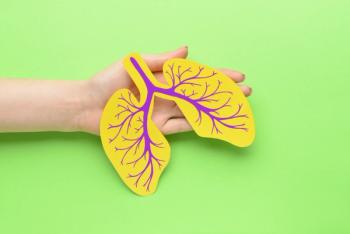
Study Shows Symptom-Driven Use of Inhaled Glucocorticoid Among Black, Latino Patients Reduces Severe Asthma Exacerbations
Research of the real-world effect of asthma interventions among Black and Latino patients is limited. Findings reported in the New England Journal of Medicine will help fill that void.
Black and Latino Americans are disproportionately affected by asthma, both as a severe illness that can result in trips to the emergency department and, in the worse cases, death. After statistical adjustment for prevalence, mortality from asthma is twice as high among Black and Latino people as it is among White people. Yet studies of treatment strategies to keep asthma under control among Black and Latino patients have been limited.
A
The results show that over the course of 15 months, the 600 patients randomized to the inhaled glucocorticoid experienced 15% fewer severe asthma exacerbations than the 601 randomized to usual care. The researchers calculated that was the equivalent to 0.13 fewer exacerbations per person per year.
That positive finding fit with the current understanding of how asthma should be controlled and guidelines. This study stands out, though, because it focused on Black and Latino patients. The researchers also consulted with patients and their advisers on the study’s design, particularly the selection of the end points.
In an accompanying editorial,
Bryant-Stephens emphasized that race is a social construct. Health disparities among people with asthma are the result of “structural and systemic racist practices,” she wrote, and efforts to address them must take into account the social determinants of health.
Elliot Israel, M.D., the trial’s principal investigator and the lead author on paper published in NEJM, and his colleagues recruited patients at 19 primary care and specialty clinical organizations. Enrollment was limited to people with prescriptions for a daily inhaled glucocorticoid (with or without long-acting beta-2 agonist) and either a score on standardized test indicating that their asthma was not well controlled or an asthma exacerbation that led to use of systematic glucocorticoids or an overnight hospitalization.
Participation in the trial involved only one in-person visit at which patients were randomized into the intervention group or the control one. Participants in the intervention group were given inhaler that administered a metered, 80-microgram dose of beclomethasone dipropionate, sold under the brand name Qvar by Teva Pharmaceuticals. They were told to take one puff of Qvar for each puff of quick-reliever inhaler and five puffs with each quick-relief nebulization. Patients were followed by monthly surveys that were conducted according to patient preference.
Adherence by patient self report was high. In the intervention group, 81% of patients said they used Qvar with quick-reliever inhalers all or most of the time and 76% reported using it with quick-relief nebulization all or most of the time.
The result showed that annual rate of severe asthma exacerbation was 0.69 in the intervention group and 0.82 in the control group with a hazard ratio difference of about 15%. Israel and his colleagues reported that the difference was consistent throughout that the trial. Other measures of asthma severity also showed greater improvement in the intervention group. Interestingly, the hospitalizations were slightly higher in the intervention group than in the control group (11.8% vs. 11.5%).
Israel and his colleagues said one of the advantages of the approach they tested is that it would be easy to implement because it required only one in-person visit and that symptom-driven use of Qvar was simply added to the treatment that patients were already on.
But Bryant-Stephens noted that insurance coverage could be a barrier because, she said, insurance-approved prescriptions for metered-dose inhalers typically allow for daily maintenance, not additional symptom-driven doses.
Newsletter
Get the latest industry news, event updates, and more from Managed healthcare Executive.

















































